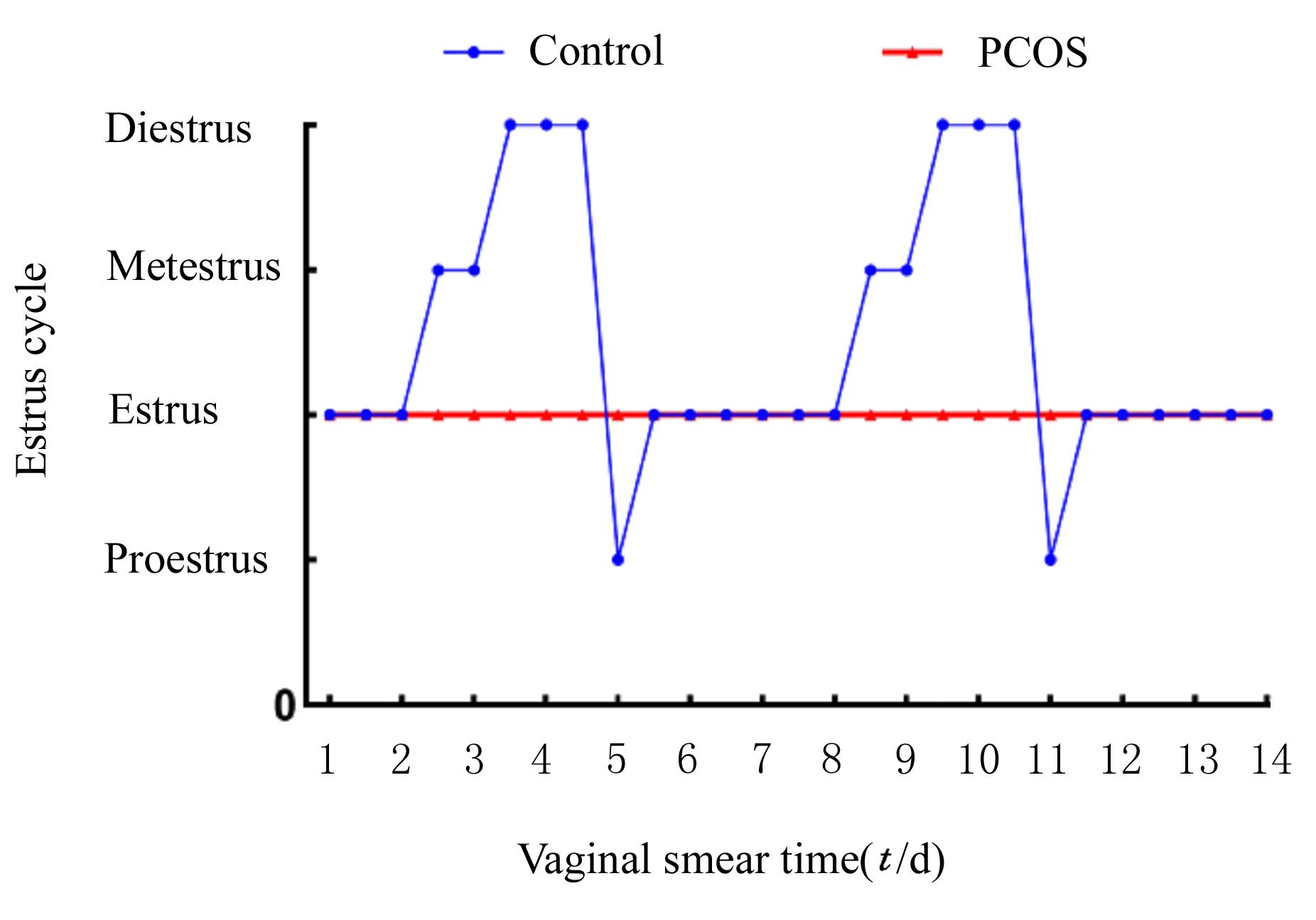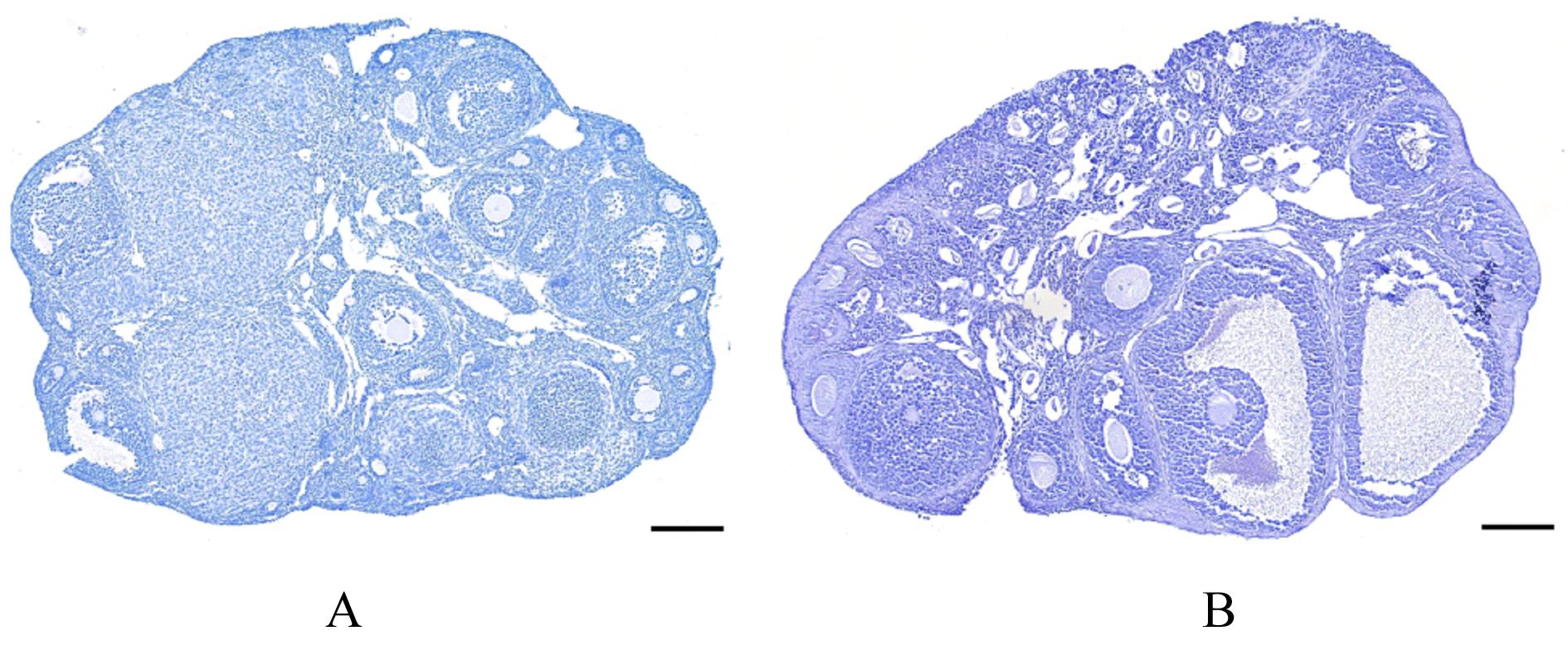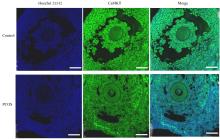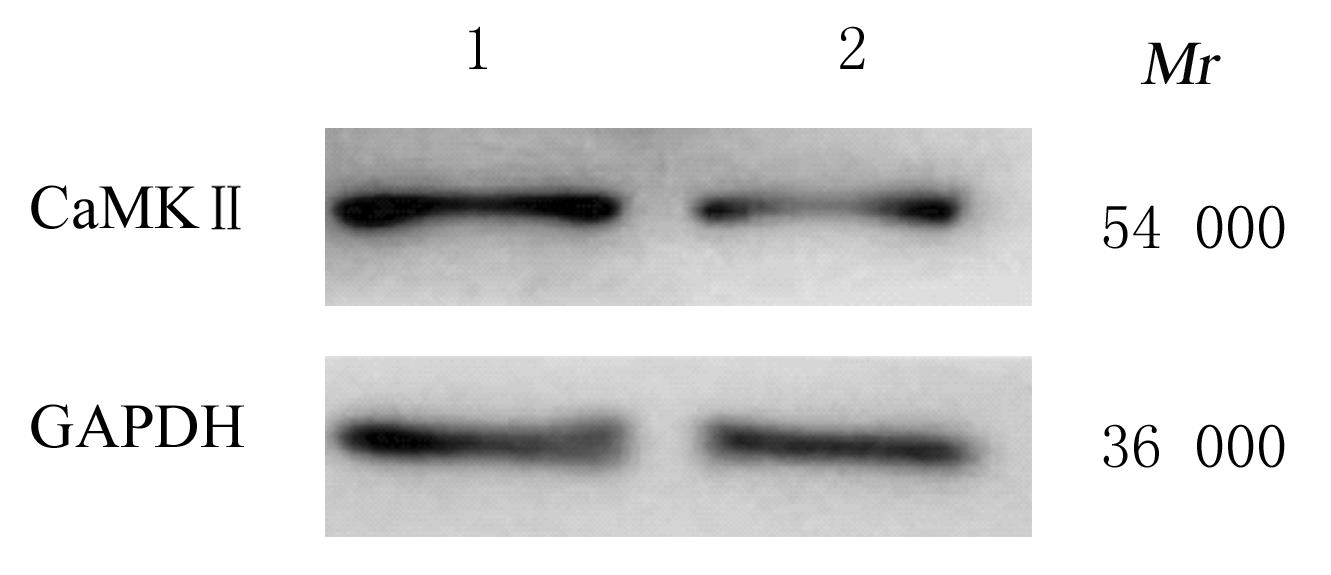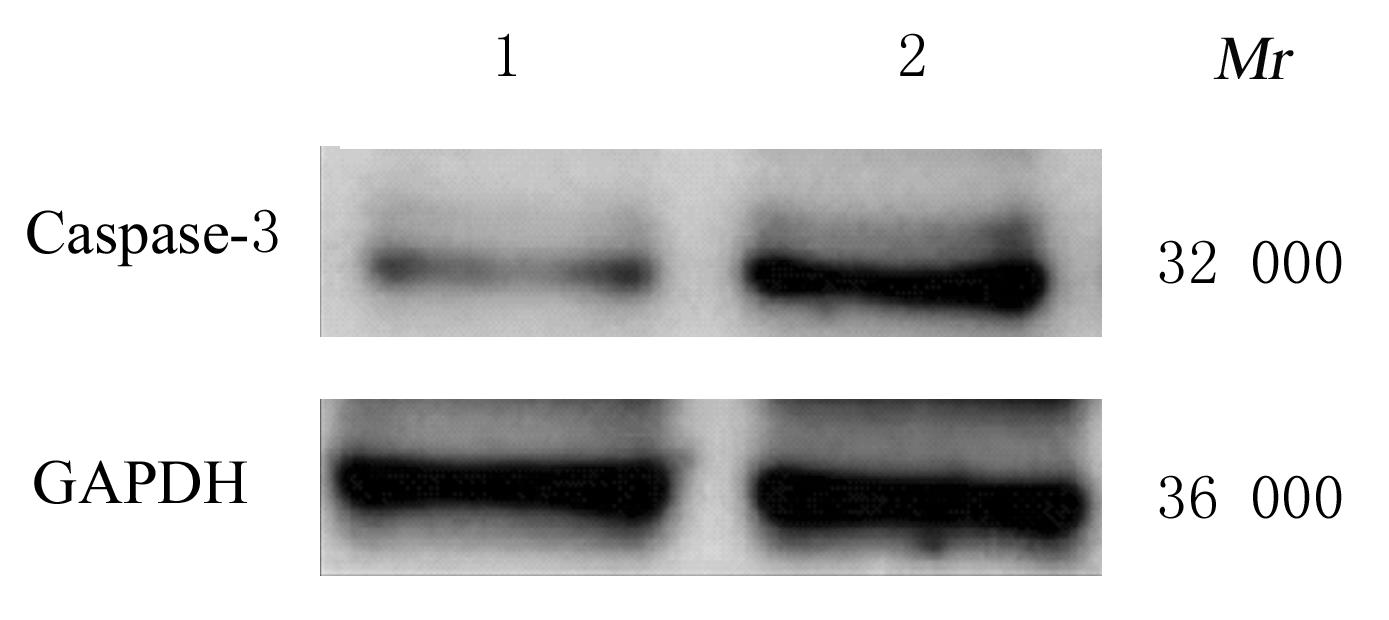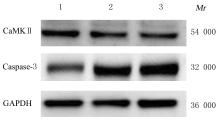吉林大学学报(医学版) ›› 2023, Vol. 49 ›› Issue (4): 968-974.doi: 10.13481/j.1671-587X.20230418
CaMKⅡ对多囊卵巢综合征模型小鼠颗粒细胞中Caspase-3表达的影响
谢贤国1,2,马亚博1,2,徐娅秀1,2,张燕1,2,杜长征1,2,徐金瑞1,2,杨易1,2( )
)
- 1.宁夏大学 西部特色生物资源保护与利用教育部重点实验室,宁夏 银川 750021
2.宁夏大学生命科学学院微生物与分子生物学系,宁夏 银川 750021
Effect of CaMKⅡ on Caspase-3 expression of granulosa cells in mice with polycystic ovary syndrome model
Xianguo XIE1,2,Yabo MA1,2,Yaxiu XU1,2,Yan ZHANG1,2,Changzheng DU1,2,Jinrui XU1,2,Yi YANG1,2( )
)
- 1.Key Laboratory of Protection and Utilization of Biological Resources with Western Characteristics,Ministry of Education,Ningxia University,Yinchuan 750021,China
2.Department of Microbiology and Molecular Biology,School of Life Sciences,Ningxia University,Yinchuan 750021,China
摘要:
目的 探讨钙调蛋白依赖性蛋白激酶Ⅱ(CaMKⅡ)在正常小鼠卵巢和多囊卵巢综合征(PCOS)小鼠卵巢组织中的差异表达,阐明CaMKⅡ对PCOS小鼠卵巢颗粒细胞凋亡的影响。 方法 用蓖麻油溶解脱氢表雄酮(DHEA)皮下注射诱导PCOS小鼠模型(PCOS组),对照组小鼠注射等体积蓖麻油,采用酶联免疫吸附试验(ELISA)法检测2组小鼠血清中睾酮水平,阴道涂片监测2组小鼠发情周期变化,HE染色观察2组小鼠卵巢组织病理形态表现,免疫荧光染色法检测2组小鼠卵巢组织中CaMKⅡ蛋白定位和荧光强度,Western blotting法检测2组小鼠卵巢组织中CaMKⅡ和含半胱氨酸的天冬氨酸蛋白水解酶3(Caspase-3)蛋白表达水平。采用短发夹RNA(sh-RNA)-CaMKⅡ慢病毒转染人卵巢颗粒细胞(KGN细胞)建立稳转体系,分为空白对照组、sh-CaMKⅡ-1组和sh-CaMKⅡ-2组,Western blotting法检测各组KGN细胞中CaMKⅡ和Caspase-3蛋白表达水平。 结果 与对照组比较,PCOS组小鼠血清中总睾酮和游离睾酮水平明显升高(P<0.01),发情周期紊乱,停滞于发情中期,卵巢组织中出现颗粒细胞层数较少的空泡状卵泡,表明PCOS小鼠模型建立成功。CaMKⅡ蛋白在小鼠卵巢组织的卵母细胞、颗粒细胞和间质细胞中均有表达;与对照组比较,PCOS组小鼠卵巢组织中CaMKⅡ荧光强度和蛋白表达水平明显降低(P<0.01),Caspase-3蛋白表达水平明显升高(P<0.01)。与空白对照组比较,sh-CaMKⅡ-1和sh-CaMKⅡ-2组KGN细胞中CaMKⅡ蛋白表达水平明显降低(P<0.01),Caspase-3蛋白表达水平明显升高(P<0.01)。 结论 PCOS小鼠卵巢组织中CaMKⅡ蛋白表达水平降低诱导Caspase-3蛋白表达水平升高,进而促进颗粒细胞凋亡。
中图分类号:
- R711.75



